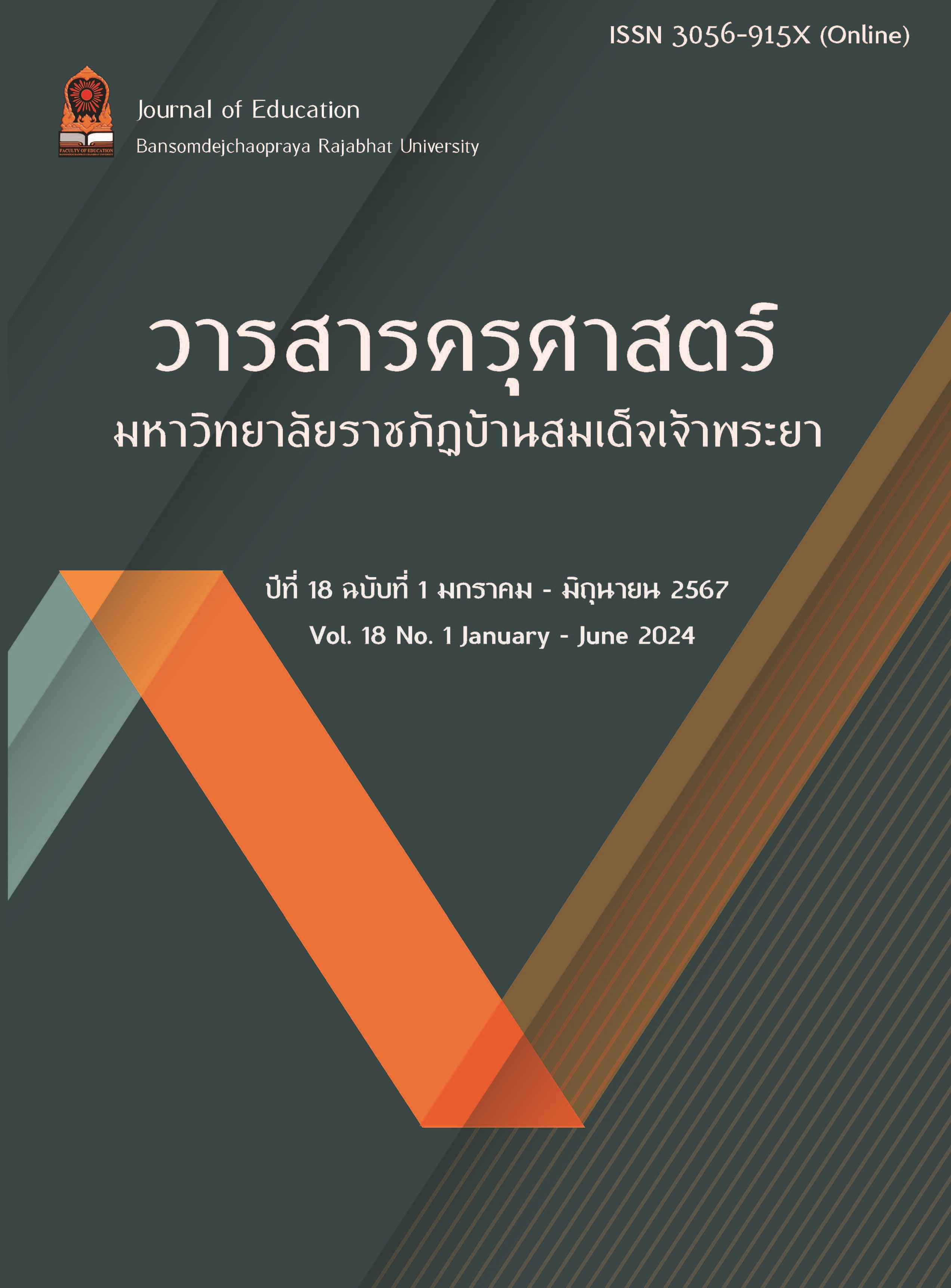Developing a martial arts curriculum for developing basic self-defense skills and abilities of students who are interested in martial arts and self-defense
Keywords:
Martial arts course, basics, martial arts, self-defenseAbstract
The purpose of this research was to develop a martial arts curriculum for the development of basic self-defense skills and abilities of students who are interested in martial arts and self-defense. The researcher studied documents, research and conducted in-depth interviews. and summarized as a short-term martial arts course outline The draft curriculum obtained from the analysis was then used for group discussion. Analyze the consistency of the opinions of 17 experts, consisting of health education and physical education. Curriculum and teaching and measurement and evaluation With content validity equal to 1.00 to consider the correctness, appropriateness, and feasibility of implementing a short-term martial arts curriculum.
The results of the research found that the short-term martial arts curriculum consists of 1) the objectives of the curriculum To develop basic skills and abilities in self-defense 2) The structure of the course consists of (2.1) standing (2.2) moving (2.3) punching (2.4) elbowing (2.5) kneeing (2.6) kicking ( 2.7) Throwing and bringing the opponent to the ground and (2.8) Grabbing 3) Study time and 4) Lesson plan. The course aims to develop basic skills and necessities of self-defense, especially in the part of having correct knowledge and understanding and behavior in performing various poses in sequence with techniques and methods. Management Solving specific problems and predictions about what will happen in the future This is to lead to the important goal of developing interested people and learners to have potential and complete knowledge covering the objectives of the curriculum, which will be used for maximum benefit and effective self-defense.
Downloads
References
กรมกิจการสตรีและสถาบันครอบครัว. (2564). https://www.egov.go.th/th. สืบค้นเมื่อ 10 มีนาคม 2567.
เจษฎา เจียระนัย และคณะ. (2557). ทักษะชีวิตในการพัฒนาสุขภาพ (Life skills for health development ). กรุงเทพฯ : ศูนย์ส่งเสริมวิชการ, 2557 พิมพ์ครั้งที่ 1. 192 p.
อังคณา แตงไทย, นิรอมลี มะกาเจ, ต่อศักดิ์ แก้วจรัสวิไล และราตรี เรืองไทย. (2563). ผลของการออกกำลังกายท่าชุดมวยไทยด้วยการชกลม กระสอบทรายและเป้าล่อ ที่มีผลต่อการตอบสนอง ของระบบหัวใจและหายใจในเพศหญิง. วารสารวิทยาศาสตร์และเทคโนโลยี. 9(2).
อานันท์ รุ่งเรือง. (2556). ผลของการฝึกออกกำลังกายด้วยการรำมวยไทยที่มีต่อสุขสมรรถนะและการทรงตัวของผู้สูงอายุ. วารสารวิทยาศาสตร์การกีฬาและสุขภาพ. 15(3)
Boutcher, S. H. (2010). High-intensity intermittent exercise and fat loss. Journal of obesity. 20(11).
Finlay, M. J., Greig, M., McCarthy, J., & Page, R. M. (2020). Physical Response to Pad- and Bag-Based Boxing-Specific Training Modalities. The Journal of Strength & Conditioning Research, 34(4).
International Olympic Committee. (2020).Olympic Sports. Retrieved from https://olympics.com/tokyo-2020/en/sports/. สืบค้นเมื่อ 15 เมษายน 2567.
Kingkaew. (2012). ศิลปะการป้องกันตัว( Martial Arts )(ออนไลน์). แหล่งที่มา : http://55011225003.blogspot.com/2012/07/blog-post.html . สืบค้นเมื่อ 15 เมษายน 2567.
MerlIwBot. (2013). ศิลปะการป้องกันตัว(ออนไลน์). แหล่งที่มา : http://th.wikipedia.org/wiki/%E0%B8%A8%E0%B8%B4%E0%B8%A5%E0%B8%9B%E0%B8 . สืบค้นเมื่อ 15 เมษายน 2567.
Thaimmaclub. (2013) . ประวัติศิลปะการต่อสู้ (ออนไลน์). แหล่งที่มา : http://thaimmaclub.com/category/history/ . สืบค้นเมื่อ 15 เมษายน 2567.
Downloads
Published
How to Cite
Issue
Section
License
Copyright (c) 2024 Faculty of Educaion Bansomdejchaopraya Rajabhat University

This work is licensed under a Creative Commons Attribution-NonCommercial-NoDerivatives 4.0 International License.
บทความที่ได้รับการตีพิมพ์เป็นลิขสิทธิ์ของคณะครุศาสตร์ มหาวิทยาลัยราชภัฏบ้านสมเด็จเจ้าพระยา
ข้อความที่ปรากฏในบทความแต่ละเรื่องในวารสารวิชาการเล่มนี้เป็นความคิดเห็นส่วนตัวของผู้เขียนแต่ละท่านไม่เกี่ยวข้องกับมหาวิทยาลัยราชภัฏบ้านสมเด็จเจ้าพระยา และคณาจารย์ท่านอื่นๆในมหาวิทยาลัยฯ แต่อย่างใด ความรับผิดชอบองค์ประกอบทั้งหมดของบทความแต่ละเรื่องเป็นของผู้เขียนแต่ละท่าน หากมีความผิดพลาดใดๆ ผู้เขียนแต่ละท่านจะรับผิดชอบบทความของตนเอง


